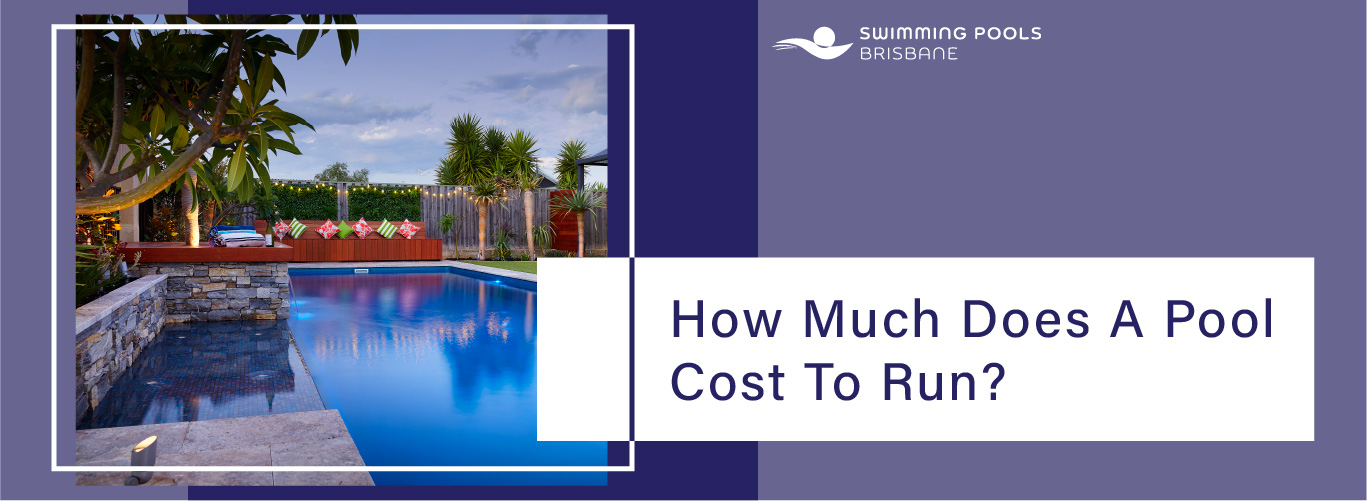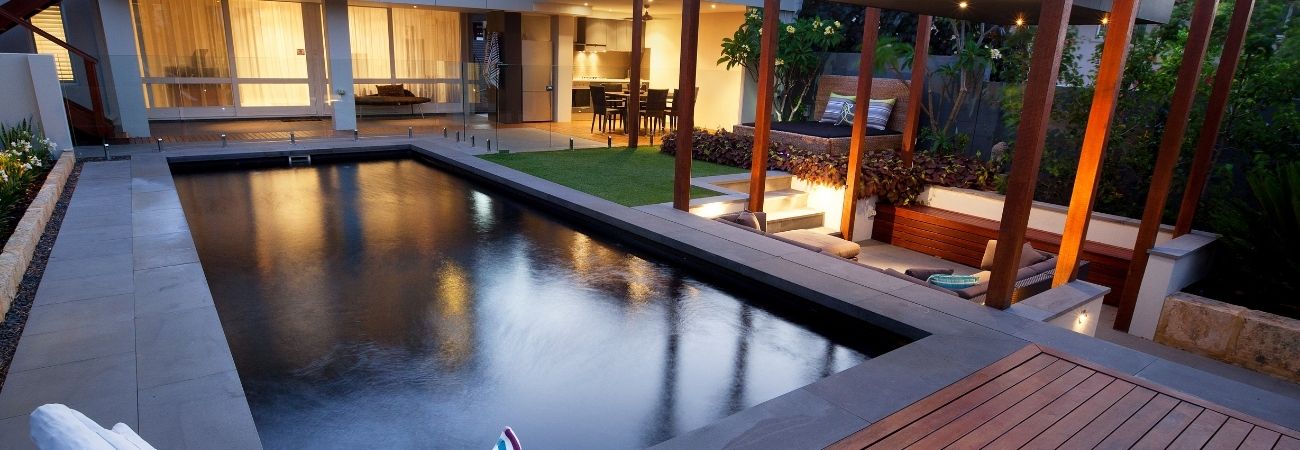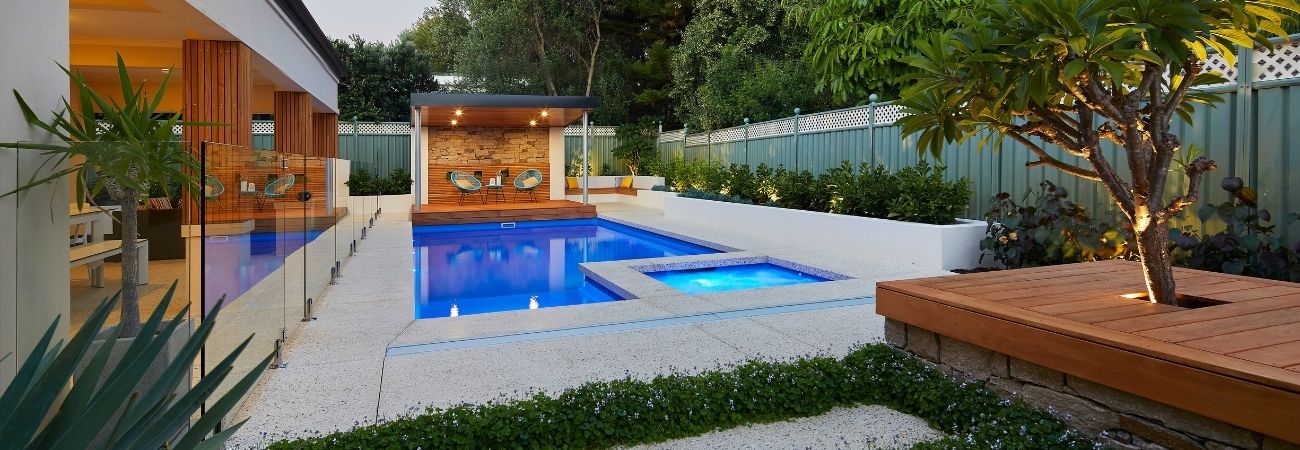A swimming pool can be a great addition to your home. Not only will your kids love you for it, but, your new pool will increase your property’s valuation as well. Pools are so popular in Australia, that over 2.7 million people have at-home swimming pools.

If you think that the costs of running a swimming pool will cancel out the value a pool will offer; don’t worry.
Here we discuss the costs which are involved in running a home swimming pool and whether it’s worth the investment for you or not. Let’s get started.
7 factors that affect swimming pool costs
1. Space preparation
For a pool to be developed at home, you’ll need to first find sufficient space for it. You also need to get the space ready for the pool. You’ll need to spend on land excavation and getting your backyard or rooftop ready for the pool.
Depending on the size of the pool, your land excavation and preparation charges might be as follows:
- $14,000-$45,000 for a rectangular pool.
- $16,000-$21,000 for an oval or round pool.
If there are fancy, curved or arched pool foundation designs, you may need to pay more.
2. Pre-fabricated installation vs on-the-field set-up
Pre-fabricated pools always cost much lesser than pools that you’re having custom-built on-the-filed (i.e., your home).
Concrete and ceramic tiled pools need to be fitted from scratch. The tile sizes need to be cut based on your preference and your land dimensions. Concrete blocks need to be made and painted. Installation of the blocks/tiles can also take up to two weeks; more if the pool is larger. Plus, your backyard will be clogged-up with construction materials, causing a lot of inconvenience.
Pre-fabricated pools, on the other hand, come prepared in pre-made moulds. The dimensions of your land will be taken and the pool is fabricated in the manufacturing unit, before being brought to your home and assembled. Fibreglass pools are an example of pre-fabricated swimming pools for homes. Due to the reduced on-site work, your costs will be lesser too.
Depending on the size of the pool, your concrete pool can cost anywhere between $50,000 & $100,000. On the other hand, a fibreglass pool can start at as low as $25,000 and go up to $50,000 based on the pool size, accessories and manufacturer.

3. Pumps & water consumption
The average Australian household uses approximately 250,000lts of water per year. A large chunk of this comes from pool maintenance. Rectangular pools can hold 30,000lts – 110,000lts of water. Oval/circular pools hold lesser water between the range of 10,000lts & 80,000lts. Each year, you need to top-up this water, after a hot Australian summer. The cost of a kilolitre of water can differ from as less as $1.06 in Tasmania to as high as $4.55 in Western Australia. Plus, this water needs to be fully-changed once every 3-5 years to prevent algae from growing in and contaminating your pool.
To ensure your water consumption is efficient, you need a good pump. Overall, you may expect to spend between $800 and $1,200 annually on your pool pump based on the kilowatt you choose. A 1kW pump typically runs for about 10 hours each day without any problem.
4. Special features
Speciality pools are those that come with a water heating feature or an attached rain feature. There are also pools that have water fountains, in-built Jacuzzis and counter currents. All of these can add extra cost to run your pool.
Specialized heat pumps can cost you $3,600-$6,900. But, if you shift to solar panels, you can reduce this cost to as less as $1 per day. A pool with a built in jacuzzi can be priced as high as $40,000 for the spa equipment, based on the number of settings and features offered. A pool water feature can cost you an additional $200-$300 depending on the material and design. And if you’re interested in using a counter current system, you may have to spend another $1500-$2000.

5. Accessories for the pool
Swimming pool accessories include those elements which you add to improve the aesthetics and safety of your pool. So, underwater LED lights or above-the-surface lamps, disability-friendly steps and grass carpeting surrounding the pool all are examples of pool accessories. Other items like life jackets, buoy rings, arm or leg floats, rescue ropes and pool safety alarms are also accessories that can increase your expenses by a few thousand dollars. Can your fibreglass pool have waterslides? find out now!
6. Filtration & chlorination
Pool filtration systems get rid of the dirt, dust, debris, leaves, feathers etc. that fall into your home swimming pool. Your filter choice depends on usage rate. If more people use your pool or you use it very extensively, then a higher-powered filter is necessary. Powerful filtration is also more important for outdoor pools than indoor pools.
Pool filters can cost you between $500 & $1000 in Australia.
Regular chlorination is also essential to keep pathogens out of your swimming pool and reduce risk of water-borne infections. Typically, it is recommended that you shock the pool with 1.6kgs of chlorine per 1,00,000 litres of water, once a week. A 1kg pack of chlorine powder may cost you $15-$20 depending on the brand you choose.

7. Pool maintenance
Finally, apart from all of the above, you will have the occasional swimming pool maintenance charges. For example, you may need to call in professionals to clear large debris from your pool after a heavy rain. Or, your pool tiles/blocks may crack due to extensive usage and you may need to repair your pools. If the pool is too slippery, you may need to hire pool cleaners to scrape the slippery algae off the surfaces.
Or, imagine if your pool pump, filtration system, heating system, water feature or counter current etc., were to malfunction. You’ll need to get them repaired as well. After about 5-7 years, you’ll need to replace these systems too. All of this can increase your annual expense by a few thousand dollars.
How much can you expect to spend on your pool annually?
In Australia, you may expect to spend anywhere between $50,000 to over $150,000 in the first year, depending on:
- How big your pool is.
- Which hi-tech features you purchase.
- How often you get your pool maintained.
After the first year, your expenses will reduce considerably because you will only need to spend about $5,000-$10,000 a year for maintenance and chlorination.

Ways to reduce your swimming pool expenses
There are ways these swimming pool expenses can still be curtailed – both in the first year and later. Here are a few ways to do this:
- Choose fibreglass pools. These pools are really long-lasting, staying perfect for nearly 25 years. They’re also easy to install and can be fitted within a week of placing the order. Plus, fibreglass pools don’t need to be acid washed, resurfaced or re-tiled like how other pools need to be every few years. This reduces your overall maintenance as well. Another advantage of fibreglass pool is that they can be made into all three types of pools such as – below-ground pools, partially-above-ground pools and fully-above-ground pools. Above-ground pools cost the least and you can have them installed for as less as $7000-$8000.
- Have solar panels installed at home. This will prevent the need to get heat pumps for your pool. The solar panels will store a lot of solar energy during summer, which will be used during winter months.
- Skip the underwater LED lights, unless you use the pool extensively in the evenings or at night. It can save you a pretty sum, since you won’t need to keep changing the light batteries every year.
- Consider getting a separate plastic, foam, fibreglass or inflatable hot tub, in the place of your built-in jacuzzi. These cost much lesser and can help you save on your annual pool costs.
- If you want a water feature, keep it simple without the illumination and air bubble systems.
- Tie nets or covers over your pool when not in use. This will prevent debris from falling into the water and you won’t need to spend as much on maintenance.
For more information about pool installation, call us at Swimming Pools Brisbane. Our pools are made using premium-quality fibreglass and we have swimming pool installation options for clients with all budgets.
